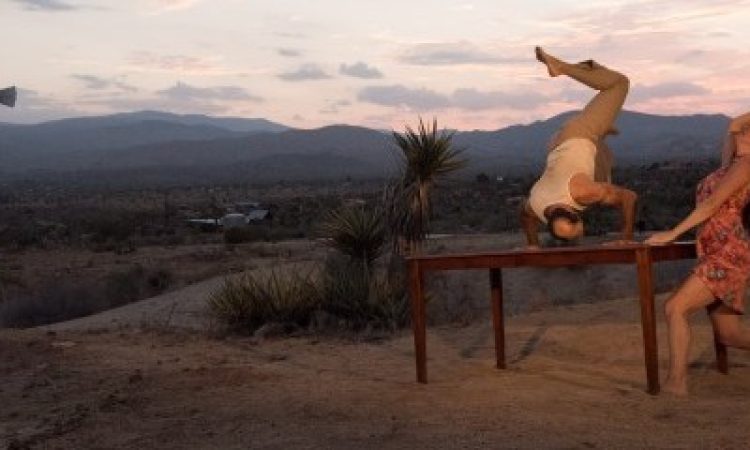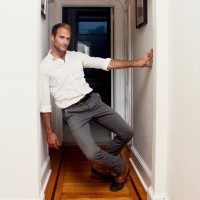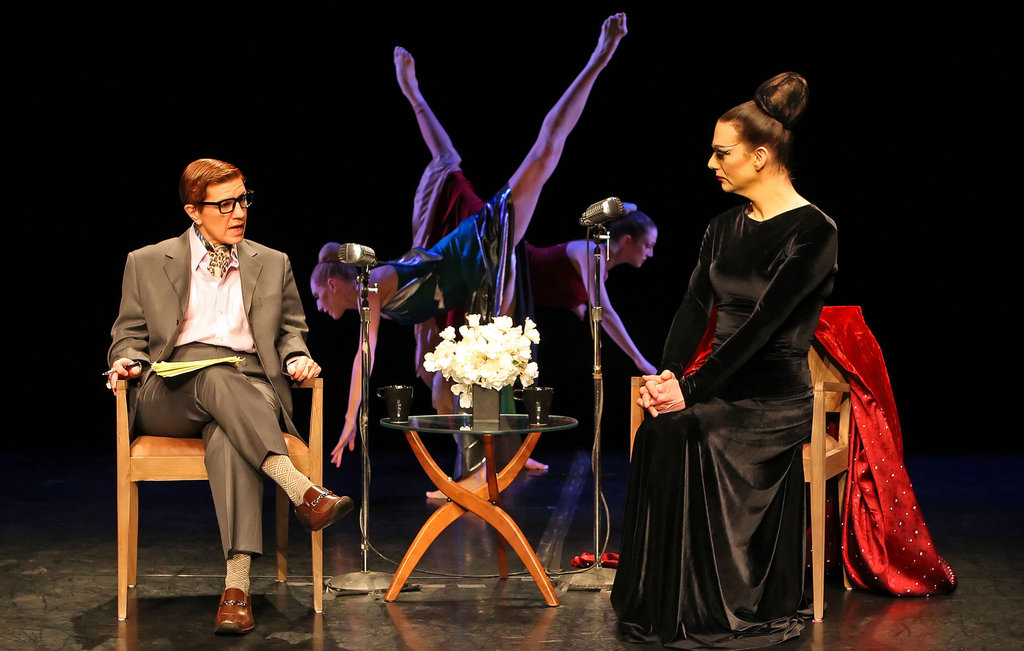Last February, I had an opportunity to sit down with choreographer Nichole Canuso to discuss the early stages of her upcoming Fringe show Pandæmonium, a collaboration with director Lars Jan (of Early Morning Opera), theater artist Geoff Sobelle, and video designer Pablo N. Molina. Below is an excerpt of our tea/coffee-infused chat:
BH: Can you tell me about the new work?
NC: The original idea was to create two solos each happening in two different places simultaneously. The two solos would each be in front of a live audience, and behind each would be a screen that connects both people so that one person is in half the set and the other person is in the other half of the set. The audience would see both people together virtually but only one person live.
I had this image of all the interactions being accidental. You think you are in your own empty room, but everything you do is linking in some way to somebody else. In some ways it is about cause and effect, but it’s also about the actual moment of things linking up, and the “what ifs.”
BH: It makes me think of Jorge Luis Borges, and in a lot of the Borges stories, once you get to the end you see the links that led to that moment.
NC: And where you are in the maze determines what you think about it or the perspective you are given, and that changes the perspective of what you’ve already done or what you might do.
I was working with Lars on the ideas, and we got into the studio to test early versions. We then moved forward with Pablo and Geoff to workshop things more elaborately. So we had Geoff on one side of the room and me on the other side of the room, with the intention of eventually separating us across geography. I was really struck by the visual landscape, the visceral effect of two people who think they are alone… and I enjoyed being able to scan all three scenarios as opposed to seeing…
BH: A single body with projection?
NC: Exactly. All of us got excited about the potential. The compost of the accumulating ideas starts to feed new growth. What does it mean to be alone? What does it mean to be together? What’s all the surrounding information? We started to bring in a decadent visual world and the desire to create a bonfire and destroy it all kept coming up, where things get so overwhelming there is this desire to excise.
BH: A ritual cleaning?
NC: Or the phoenix who goes up in flames to be born again. Then Lars had this image of the whole thing being out in the middle of the desert in an abandoned drive-in movie theater and we light the whole thing on fire afterward. That feeling is in the room, of being in the middle of nowhere. The idea of desert started to be really potent in general.
BH: The isolation?
NC: The seeming emptiness, but the more you spend time there you realize how rich it is. Historically people head to the desert to find a new life, or get away from something, or to have a rebirth or a transformation.
BH: As retreat?
NC: Our country is built on going west. Heading to the desert.
BH: That mythic vision of what the West can be.
NC: At the same time, there were people there the whole time.
BH: It’s a false vision.
NC: Thinking you’ve discovering something that’s already discovered.
BH: We are masters of that in the United States.
NC: All of these things are pouring into the soup of ideas.
BH: I was thinking about the progression of the first section of this work, and how initially you started with the performers being separate, and comparing that to how I experience my virtual life, how in particular I experience my dating life right now. I’m in my room and I’m connecting to this person in this other room, and there is this clear separation, yet we are experiencing the relationship in the screen space. If you had decided to separate the performers in different venues, it would be mirroring my lived experience. By having both performers in the same space, what becomes even more essential is that they are sharing the room.
NC: It’s offering two really different perspectives on the same moment all the time. If we are looking at each other or talking to each other, we actually have our backs to each other in the screen and vice versa. We could be doing separate things but we’re affecting each other.
BH: I feel like you are such a master at finding collaborators that get what you do.
NC: The synergy between people is often a big factor in how I choose people to work with. Not just their relationship to me, but their relationship to each other matters.
BH: Ensemble building or building a collaborative space where everyone feels connected?
NC: People ready to build an ensemble, taking the time to make that ensemble gel, and then drawing on it for a piece.
We took a trip to the desert. Putting the show out in the middle of nowhere feels the most appropriate way to get its message across, but it’s not the most realistic. We are really trying to remedy that. We have performances in theatres coming up, but at the same time something is pulling us to leave the theatre entirely and go put the whole thing in the middle of a very empty expanse.
We did a lot of talking about the piece, and thinking about how can we pull the desire to put it in the desert into the stage production. It all feels related…a sense of searching, something missing, and a way of solving.
Pandæmonium, Nichole Canuso Dance Company / Early Morning Opera, FringeArts, Sept. 14-17 at 8pm, Sept. 18 at 3pm. fringearts.com/event/pandaemonium/.






